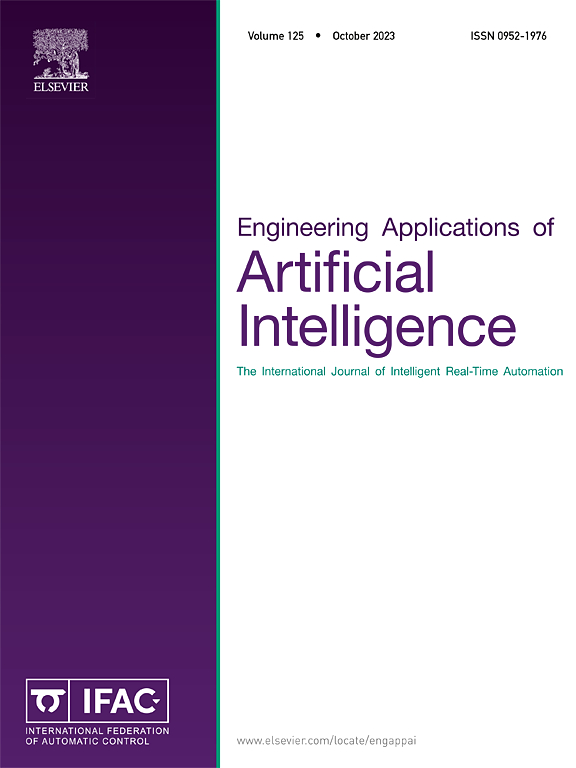Two-sided matching optimization model for green housing technology selection based on hesitant 2-tuple linguistic rough numbers
IF 7.5
2区 计算机科学
Q1 AUTOMATION & CONTROL SYSTEMS
Engineering Applications of Artificial Intelligence
Pub Date : 2025-04-03
DOI:10.1016/j.engappai.2025.110559
引用次数: 0
Abstract
In two-sided matching decision problems, the matching objects with different knowledge, experiences, and cultures provide linguistic assessments using diverse or multi-granular sets with a factor that the information provided is hesitant in nature due to different opinions given by experts. In the proposed approach, the hesitant 2-tuple linguistic information is integrated with rough approximations to develop the two novel approaches called hesitant rough numbers and hesitant 2-tuple linguistic rough numbers. The proposed novel approximations are implemented on a two-sided matching optimization model to study hesitant multi-granular uncertainty. Firstly, the matching objects provide their evaluations in the form of hesitant multi-granular terms converted into hesitant 2-tuple linguistic rough numbers. Secondly, certain optimization models based on hesitant 2-tuple linguistic rough approximations are constructed to compute the criteria weights using incomplete information. In hesitant 2-tuple linguistic rough optimization models, the maximizing deviation technique is used to find the distance between two proposed novel coefficients. To maximize the level of satisfaction with matching objects, a hesitant 2-tuple linguistic rough optimization model is developed to evaluate the overall satisfaction degree and stability of matching objects. The significance of the proposed two-sided matching optimization model is illustrated with a case study of matching between the green building technology supply and demand. The out-performance of the proposed model is highlighted by a comparison analysis with existing approaches to analyze that it can provide hesitant multi-granular rough flexibility and deals with incomplete information regarding criterion weights.
求助全文
约1分钟内获得全文
求助全文
来源期刊

Engineering Applications of Artificial Intelligence
工程技术-工程:电子与电气
CiteScore
9.60
自引率
10.00%
发文量
505
审稿时长
68 days
期刊介绍:
Artificial Intelligence (AI) is pivotal in driving the fourth industrial revolution, witnessing remarkable advancements across various machine learning methodologies. AI techniques have become indispensable tools for practicing engineers, enabling them to tackle previously insurmountable challenges. Engineering Applications of Artificial Intelligence serves as a global platform for the swift dissemination of research elucidating the practical application of AI methods across all engineering disciplines. Submitted papers are expected to present novel aspects of AI utilized in real-world engineering applications, validated using publicly available datasets to ensure the replicability of research outcomes. Join us in exploring the transformative potential of AI in engineering.
 求助内容:
求助内容: 应助结果提醒方式:
应助结果提醒方式:


